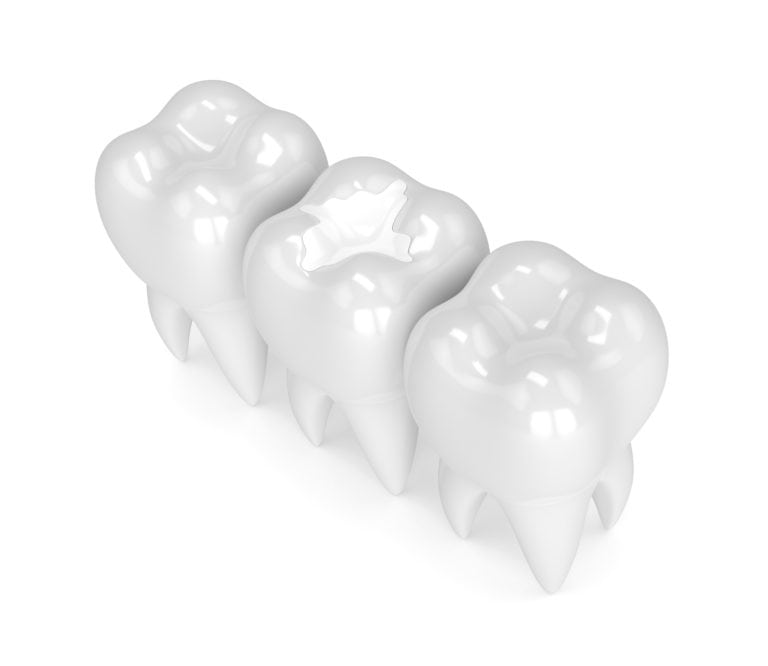
Composite fillings, also known as resin or white fillings, are tooth-colored restoration methods that are a combination of glass and plastic. They are used most commonly to restore decaying teeth, but can also be used to improve teeth by altering their color or shape. Composite fillings are a popular choice among patients because of their coloring gives them a more natural appearance.
Due to the fact that composite fillings have a natural appearance, they are ideal for use in the front teeth or in any tooth that is visible when smiling. Composite fillings work best for either small or medium cavities, and are best suited for teeth that experience minimal pressure when chewing.
In cases with larger cavities or in teeth that experience greater levels of force and pressure when chewing, composite fillings may not be the best option. Generally speaking, composite fillings are not as strong when compared to other types of fillings, such as amalgam fillings. Amalgam fillings are made up of various types of metal and, consequently, are much stronger and better suited for teeth that absorb greater force when chewing.
The process of placing a composite filling begins with your dentist numbing the affected area to keep you comfortable during the procedure. Then, the decayed tissue must first be removed from the tooth before the filling can be placed. After all the decayed tissue has been removed from the tooth, your dentist will clean the remaining space and prepare it for the filling. If the decay has gone deep enough to be near a nerve, then a special medicine may also be placed during this stage in the filling process. Once the space has been cleaned and prepped, then the composite filling will be placed within this space.
After the filling has been placed, your dentist will then use special tools to shape the filling material accordingly. Once the filling has been shaped and hardened, then your dentist will finish up by polishing the surface. When the procedure is over, you may experience some tooth sensitivity to temperature for about a week after the procedure. This is simply because the tooth needs to acclimate to the new filling, and the tooth sensitivity should begin to subside a few days after the procedure and will disappear completely once the tooth has acclimated.
Composite fillings may or may not be covered under the parameters set by dental insurance. Most insurance companies will authorize some level of coverage for amalgam fillings, but may only offer partial coverage for composite fillings only if the affected tooth is noticeably visible when smiling. Depending on the type of dental insurance you have, this could mean that you will pay most, if not all, of the cost out of pocket.
If you are interested in learning more about composite fillings and whether or not they are the right choice for you and your child, schedule a consultation with Pasadena Children’s Dentistry today and we can help you make the right decision!

















Recent Comments